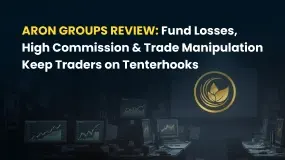简体中文
繁體中文
English
Pусский
日本語
ภาษาไทย
Tiếng Việt
Bahasa Indonesia
Español
हिन्दी
Filippiiniläinen
Français
Deutsch
Português
Türkçe
한국어
العربية
Technical Analysis in the Forex Markets
Abstract:It is generally accepted that there are three branches of technical analysis: sentiment indicators, flow-of-funds, and market structure indicators.

Traders apply technical analysis to the Forex markets because they believe that exchange rates are not always determined by economic fundamentals like central bank activity, prices and interest rates. Although long-term trends in the Forex markets are likely caused by these fundamental events, it seems that Forex traders are driven to use technical analysis because of the volatility and leverage offered by the various Forex markets.
Despite being a separate asset class, technical analysis when applied to Forex markets is no different than technical analysis used to analyze equities or futures markets. How Forex markets trade, how orders are executed, leverage and the hours the markets are open has a lot to do with how to apply technical analysis to Forex markets, but basically the same oscillators and indicators relevant to equities and futures markets apply to Forex markets.
Forex Technical Analysis – The Basics
It is generally accepted that there are three branches of technical analysis. These three areas are: sentiment indicators, flow-of-funds, and market structure indicators.
Sentiment indicators deal with the action of different market participants such as central and commercial banks. The idea behind using this information as an indicator is that their actions may represent major turning points.
Flow-of-Fund indicators analyze the financial positions of various investor groups. Basically they keep track of who is buying and who is selling. This may include tracking cash positions of the major foreign currency players.
The last branch of technical analysis and the one that we are mainly concerned about in this article deals with market structure or the character of the market indicators. These indicators include moving averages, price patterns, trendlines and oscillators.
Why Study the Trend?
The basic principle of technical analysis is the trend. In order to understand the trend, the technical trader must first define trend, know why the trend is important, and distinguish between major and minor trends.
There is no question that markets trend. Traders and investors hope to buy a Forex pair at the beginning of an uptrend at a low price, ride the trend, and sell the currency pair when the trend ends at a high price.
Trends exist in all lengths, from long-term trends that occur over decades to short-term trends that occur or 1-minute or tick charts. Trends of different lengths tend to have the same characteristics. In other words, a trend on the monthly chart will behave the same as a trend on a five-minute chart. One key to understanding trends is for the investor to choose the trend which is most important for them based on their investment objectives, their personal preferences, and the amount of time they can devote to watching the market action.
Trend traders tend to have 20/20 hindsight since past trends are easy to spot. Trading trends would be easy if the investor could spot a new trend at a bottom, buy and then exit at the top. This does not happen of course in practice since investors may be too early or too late in spotting optimal entries and exits. This is the reason for studying charts, moving averages, oscillators, support and resistance as well as other important technical tools.
Investors need to determine when a trend is beginning and ending as early as possible. This sounds simple but remember that technical analysis is not fortune telling so trend trading ideas may not perfectly predict the future. The idea is to use the indicators in the investors toolbox to find opportunities that under the right conditions could generate a successful trade. Investors should also be aware that under certain market conditions, these technical tools may not work. Trends can change suddenly and without warning. This is why investors should be aware of the risks and protect themselves against such occurrences.
The basic trend trading strategy involves two things: first the investor must decide where to enter a position and second, where to exit. The entry is often easier than the exit. When exiting a position, the investor must choose when to exit to capture a profit, and when to exit to protect against a loss. The key is to make the right decisions at the right price levels in order to avoid giving back profits and to protect against large losses.
One of the great advantages in studying the trends of markets is that technical analysis involves analyzing prices. Knowing prices can help an investor know when something is either right or wrong with an investment. At the same time, risk of loss can be determined ahead of time. This ability is unique to technical analysis. Because actual risk can be determined, investors can practice money management principles to further lessen the risk of financial “ruin”.
In summary, technical analysis can be used by the investor to determine the trend, when it is changing, when it has changed, when to enter or exit a position. When trend trading, the basic premise is: when analysis of the trend is wrong, exit the position.
What is a Trend?
Simply stated, a trend is a series of higher-tops and higher bottoms or lower-tops and lower-bottoms. Of course, higher-tops and higher-bottoms indicate an uptrend and lower-tops and lower-bottoms indicate a downtrend. Recognizing when a trend is beginning or ending is most important to the trader.
If one cannot make sense of the chart, then the best thing to do is stay out of the market until an easily identifiable trend can be determined. Trends vary in terms of length and magnitude so it is important to the investor that the trend be recognized early and long enough for the investor to take advantage of it.
Basic Trends
In order to be a successful trend trader, the investor must know why identifying trends is important. In addition, they must be able to recognize an uptrend, downtrend and a trading range. The concept of support and resistance is also important to the trend trader. Finally, the trend trader must be aware of the major methods for determining trends as well as the major signals that a trend is reversing.
As an investor, you must know why identifying trends is important. Firstly, it allows one with a minimum amount of risk of error to determine at its earliest time when a trend has begun. Secondly, trend trading allows the trader to select and enter a position in the direction of the current trend either up or down. Finally, trend trading allows the investor to exit when the trend is changing.
Trend Indicators
Trend Indicators are used to follow the trend of the market. Following is a list of the main trend indicators used by most technical analysts and explanations on how to use them. These trend indicators are also found in most market analysis software packages like the MT4, eSignal and TradeStation platforms.
Trend Indicators:
Average Directional Movement Index
Accumulation Swing Index
Bollinger Bands
Commodity Channel Index
Exponential Moving Average
Mass Index
Parabolic SAR
Simple Moving Average
Weighted Moving Average
Williams Accumulation/Distribution
In summary, Forex markets like all trading instruments follow trends. Because of leverage and volatility, however, traders must make adjustments to their trading style based on their use of leverage and volatility. This means finding the right time period to trade that fits their trading goals and objectives.
Once a trader is satisfied that he is using the correct time frame, then the first thing he must do is study and experiment with the various trending tools available.
The first step in becoming a successful Forex trader is to learn to trade the trend. The trend to follow will be determined by a traders personal preference for a particular time period.

Disclaimer:
The views in this article only represent the author's personal views, and do not constitute investment advice on this platform. This platform does not guarantee the accuracy, completeness and timeliness of the information in the article, and will not be liable for any loss caused by the use of or reliance on the information in the article.
Read more

Apex Markets Review: Traders Outraged Over Withdrawal Denials & Other Trading Issues
Struggling to access fund withdrawals from Apex Markets for months? Does the broker remain silent on fund withdrawal issues? Does the Saint Vincent and the Grenadines-based forex broker reject your winning trades? Have you failed to get a refund into the card used for deposits? Did the broker deduct from your trading account instead? Traders have been imposing these scam allegations while sharing the Apex Markets Review online. We read the reviews and shared some of them below. Take a look!

tastyfx Exposed: Fund Losses, Trade Manipulation & Account Related Hassles Hurt Traders
Are fund losses normal for you at tastyfx? Does the US-based forex broker constantly manipulate prices to hit your trading experience? Do you fail to receive a reply from the broker on your fund withdrawal requests? Do you constantly face trading account issues with tastyfx? It’s time to read the tastyfx review shared by traders online.

Aron Groups Review: Fund Losses, High Commission & Trade Manipulation Keep Traders on Tenterhooks
Have you lost your hard-earned capital while trading via Aron Groups Broker? Has the high commission charged by the broker substantially reduced your trading profits? Does the Marshall Islands-based forex broker constantly manipulate spreads to widen your capital losses? Have you been lured into trading courtesy of Aron Groups No Deposit Bonus, only to find that you had to deposit capital to get a bonus? All these and many more trading issues have become synonymous with the experience of Aron Groups’ traders. Consequently, many traders have shared negative Aron Groups reviews online. In this article, we have shared some of their reviews.

Uniglobe Markets Bonus Review: Understanding the Offers and Uncovering the Risks
Many traders start looking for a new broker by searching for special deals and bonuses. The phrase "Uniglobe Markets no deposit bonus" is something people often search for. Let's address this question clearly and directly. Based on all the information we have, Uniglobe Markets does not currently offer a no-deposit bonus. Instead, this broker focuses on bonuses that require you to deposit your own money first. To get any bonus credits, traders must put in their own capital. Read on to learn how this entire bonus works out for traders.
WikiFX Broker
Latest News
Angel one 2025 Review & Complaints
Latest FCA Daily Alerts and Consumer Warnings for 2025
Webull Widens Crypto Futures with Coinbase Derivatives
Is Nash Markets Regulated or Risk? Truth About Nash Markets’ License & Withdrawal Issues
CySEC Blocks Certification Access to Combat Advisor Impersonation
Exclusive Markets Under the Scanner: Traders Report High Swap Charges, Deposit Discrepancies & More
The United States Outgrows All Its Major Peers
PINAKINE Broker India Review 2025: A Complete Guide to Safety and Services
Pinched By Penny Shortage, US Retailers Beg Congress To Step In
PINAKINE Broker Review: A Complete Look at Its Services and Risks
Currency Calculator




